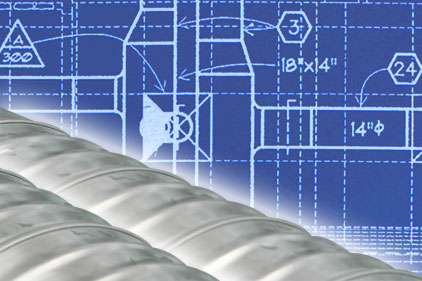When it comes to promoting, selling or creating awareness of your product or service, there’s practically no such thing as receiving too much publicity.
So if you happen to land some coveted floor space at a well-attended industry trade show like January’s AHR Expo in Dallas or this month’s International Roofing Expo in Las Vegas, easy, free media might be yours for the taking. The question is: How do you attract that sought-after coverage and how do you make it work to your advantage?
When it comes to promoting, selling or creating awareness of your product or service, there’s practically no such thing as receiving too much publicity.
So if you happen to land some coveted floor space at a well-attended industry trade show like January’s AHR Expo in Dallas or this month’s International Roofing Expo in Las Vegas, easy, free media might be yours for the taking. The question is: How do you attract that sought-after coverage and how do you make it work to your advantage?
For starters, don’t be fooled by thinking attracting coverage and receiving coverage is equal. Attracting coverage at many trade shows is actually the easy part, especially if the event, like the AHR Expo, is an industry favorite that appeals to thousands of people. But just because reporters and editors are floating about doesn’t mean they’ll float your way.
Many reporters, especially broadcast reporters who cover trade shows, have little, if any direction. Assignment editors looking for time and space to fill, typically point reporters in the direction of the venue with generic instructions such as “See what you can come up with” or “Maybe you can find something new and interesting.”
Trade magazine editors and writers may have specific assignments, but you’ll still likely be competing against hundreds of other exhibitors for their attention.
Depending on the time of year, reporters are told to tie their reports to a holiday or season. For example, if a trade show featured jewelry, the reporter might be assigned a story on what types of jewels people are buying this holiday season. If the floor features the latest in industry technology, reporters will be looking for the newest or most unique item that their readers haven’t read about before.
Edward Segal, a public relations expert and author of How To Get Your Fifteen Minutes of Fame and More, says while trade shows are some of the best opportunities for coverage, there is so much competition that it’s increasingly difficult to stand out. He advises people to “stop chest thumping and start realizing that reporters don’t care about you - they only care about how your product or service helps their audience.”
But, there are ways to generate the ink you think your company, product or spokesperson deserves.
Don't wait until show time
Organizers plan in advance and so should you. If you have a cool gadget, interactive media display, or plan to announce a new product, let organizers know in advance. When reporters visit media lounges and are looking for something visual or innovative, staffers might point them in your direction.
Reporters are not easily impressed
Reformatted brochures or slick annual reports do not tell your story in a reporter-friendly format. However, your press kit does not need to arrive with brimming balloons or overflowing beach balls. Such gimmicks will not land you coverage. Your kit should tell your story, provide key information, include your booth number, media contacts and phone numbers.
Victory with visuals
Reporters need visuals. Put photographs, displays or posters up at your booth so they can see what you’re talking about. If you’re handing out photos, make sure they are high resolution and available in various formats and can be accessed on your company Web site for reprint. Include short captions and photographer credits. If a reporter is attracted to your booth, visuals increase attention and provide a backdrop for interviews.
Too often however, public relations efforts focus very heavily on just capturing media attention and fail to spend critical time understanding how to benefit from it. Many editors will cut short visits with trade show staffers who talk about their company but cannot simply explain how the product would benefit people in the industry.
For example, do you know what “multiple, heterogeneous operating system versatility” is? Many people don’t. But it’s common to hear such jargon coming from booth personnel. Using difficult-to-understand language is a publicity death sentence.
By failing to recognize the importance of training staffers and spokespeople, organizations risk losing an opportunity to leverage coverage. A good spokesperson understands how quickly and effectively to position the product or company. A bad spokesperson can sabotage a multimillion-dollar public relations campaign in a matter of seconds.
Media training
If your staffers aren’t media trained, keep them away from the trade show. They need to know what reporters want, the do’s and don’ts of interviewing and how to develop a short, attention-grabbing description that they can share with almost any audience. Don’t refer reporters to a PR person back at the office. If they walk away, chances are they’re gone for good.
Follow up
Don’t assume the writer and editors will call you to follow up. Give them a couple of days after the show ends to get back to the office, and then call to find out if they need additional information, pictures or interviews. Many writers hate to admit this, but the easier you make their job, the happier they are.
Finally, ask the right questions. Take a moment to find out whom you’re talking to, what they cover and what would interest their readers or listeners. Then, try to become one of those readers and visualize what you would want to read about if you were them. When you learn to speak from an audience’s perspective, you will build credibility and position yourself as someone who gets “it.” By doing that, you are positioning yourself as a resource, building relationships and opening opportunities for reporters to call you in the future. That’s what leveraging is all about.
Karen Friedman is a business-communication coach whose techniques have been successfully used by thousands of people across the globe. Founder of Philadelphia-based Karen Friedman Enterprises Inc., she counsels spokespeople, newsmakers and executives to make the most of every interview, appearance and presentation. An award-winning television news reporter and anchor, Karen has repeatedly received the International Association of Business Communicators recommended speaker designation. For more information visit here.









